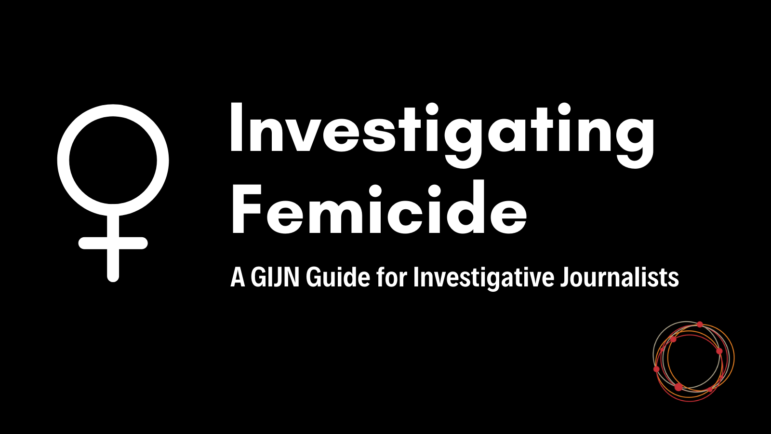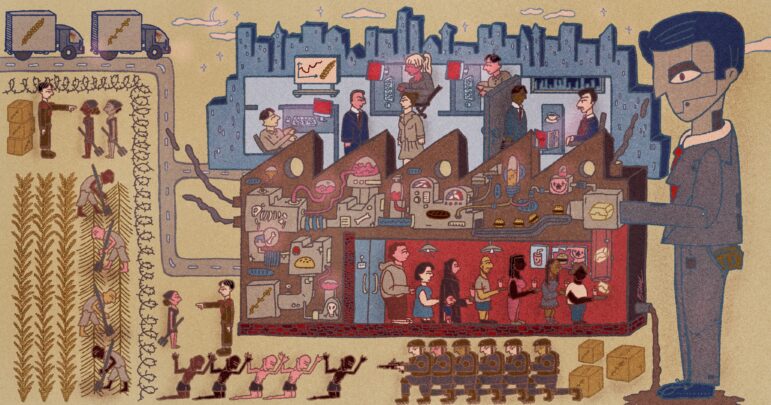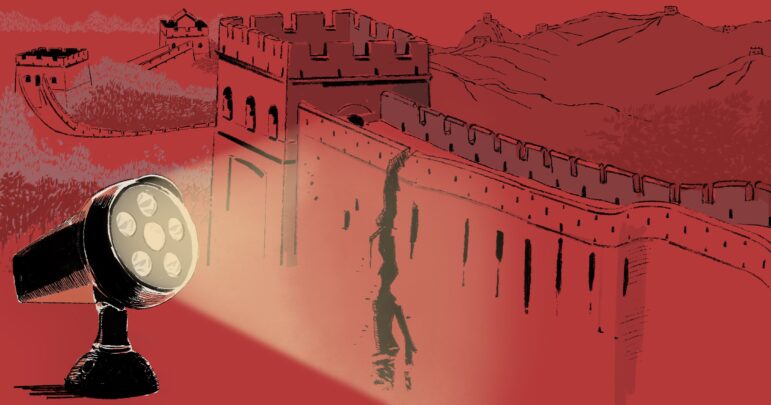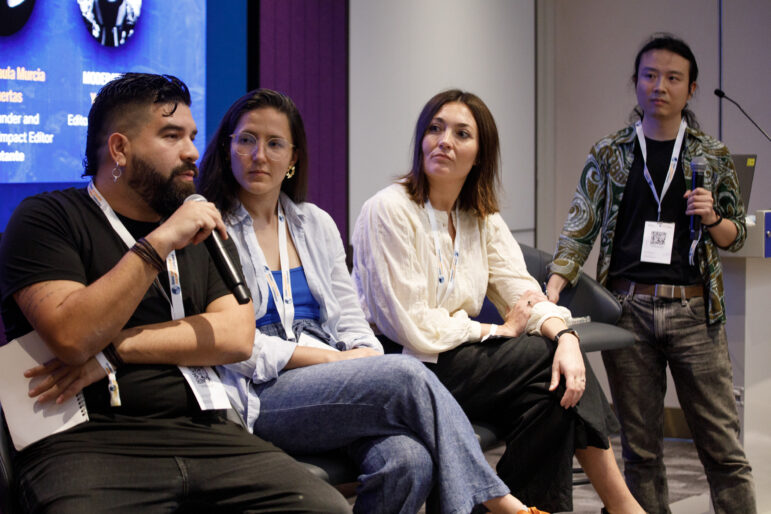

Juan José Martínez D’Aubuisson, María Paula Murcia Huertas, Anne Kristine Hermann, and Yukun Zeng (left to right) led the "Ethnographic Journalism" panel at GIJC25. Image: Samsul Said for GIJN
The relationship between journalists and ethnographers is often a one of “mutual suspicion,” according to Anne Kirstine Hermann, a Danish anthropologist and journalist.
Ethnographers — a term from social or cultural anthropology for those who study human societies, customs, and practices — might view journalists as parachuting interlopers who extract information from communities for an external audience; conversely, journalists can perceive ethnographers as biased experts whose research methods are too slow and obscure to be truly relevant.
But many journalists with a background in anthropology are now bridging both fields to better report on marginalized communities.
At the “Ethnographic Journalism” session at the 14th Global Investigative Journalism Conference (GIJC25), moderated by Yukun Zeng, anthropologist and cofounder of Tying Knots, speakers Anne Kristine Hermann, radio anchor at Denmark’s DR P1 Morgen and Orientering programs; Juan José Martínez D’Aubuisson, Salvadoran freelance journalist who has worked for InSight Crime; and María Paula Murcia Huertas, cofounder and project and impact editor of Colombia’s Mutante, addressed the promise and perils of their discipline-blending approach.
One Term, Many Approaches
Ethnographic reporting rests on three pillars, explained Martínez D’Aubuisson:
- A clear theoretical framework that guides how you understand your subject. “For example, in the work I’ve been doing for years on the border between the Dominican Republic and Haiti, my theoretical framework is the theory of identity and the construction of the Other, which is what ultimately constitutes a border,” Martínez explained.
- A deep historical understanding of the sociocultural processes affecting the communities you’re working among.
- Ethnographic practices such as semi-structured interviews, life histories, the snowball sampling method, and a systematic and prolonged stay of months or years among the people on whom you are reporting.
Although authors, frameworks, and methods from the field of anthropology aren’t explicitly mentioned or quoted in your final piece, in ethnographic journalism they will shape your work, he added.
Hermann, who published an award-winning book on the Danish colonization of Greenland, defined ethnographic journalism as “the employment of immersion strategies adopted from social sciences for distinct storytelling purposes.”
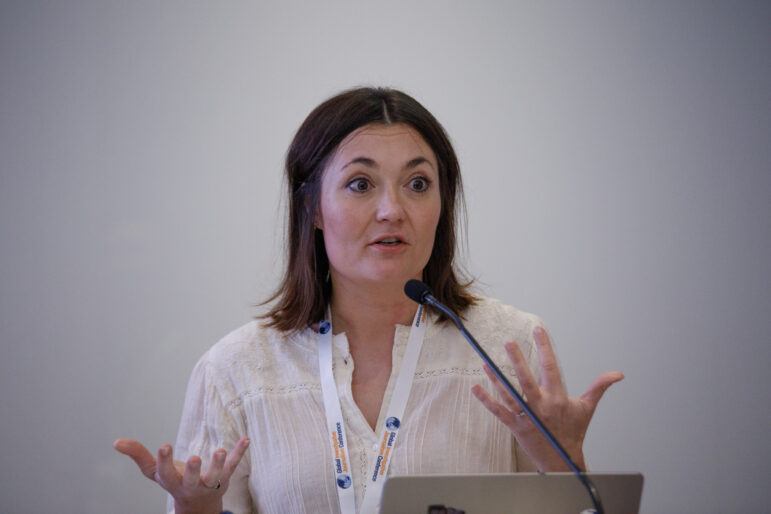
Anne Kristine Hermann, radio anchor at Denmark’s DR P1 Morgen, speaks at the “Ethnographic Journalism” panel at GIJC25. Image: Samsul Said for GIJN
“In anthropology, we go to the field to build theory, but in ethnographic journalism, we go to the field, and we’re using tools like participant observation, life world interviews, and deep immersion to tell a story,” she noted.
The methods Hermann adopted from social science to write “Imperiets børn” (Children of the Empire) — about Denmark’s annexation of Greenland while implementing policies to assimilate and “Danify” Greenland’s Inuit population — include:
- Discourse analysis of speeches, public interventions, and official documents produced by Danish public officials during Greenland’s shift from colony to annexed territory in the 1950s.
- Archival analysis to understand the zeitgeist and the historical process through which Inuit communities were meant to be “Danified,” because, as Hermann said about understanding social processes: “It’s the chronology, stupid.”
- Reporting on the ground in Greenland communities and conducting oral history interviews with adults who were children when assimilation and displacement policies were implemented.
Maria Paula Murcia Huertas explained that the ethnographic platform is based on a novel approach — journalism anchored in anthropological methods and aims to create content that empowers citizens to effect change.
“Ethnography is at the core of what we do,” said Murcia Huertas. Mutante’s content centers on human rights, gender, climate emergency, and mental health, and is determined by a three-stage “conversation method” developed by the newsroom:
- Gather stories, opinions, and evidence from their audience’s perspective.
- Convene experts who supply evidence to explain the causes and consequences of the issues addressed.
- Create actions and content that empower citizens to do something about the issue.
For example, the information they gather through sources such as social media comments is filtered, structured, and analyzed through what Murcia Huertas referred to as “my baby” — a digital library that employs anthropology methods to categorize comments from their audience and enables Mutante to tackle issues such as disinformation and prejudice, and produce the most relevant content for their viewers.
One example of this method is their award-winning Instagram video about Colombia’s empty state-owned lands, part of a wider series of videos about land issues in Colombia.

María Paula Murcia Huertas, cofounder of Colombia’s Mutante, speaks about ethnographic journalism at GIJC25. Image: Samsul Said for GIJN
Ethnography or Journalism?
The Q & A session following the discussion fielded questions about whether “cherry-picking” methods when conducting ethnographic journalism can be a valid approach, and the merit of having theoretical discussions about the difference between reporting and ethnography — and whether the distinction needs to be resolved at all.
Hermann pointed out that there are no methodological rules that determine what ethnographic journalism is, and that the practice exists on a spectrum — each publication or journalist will decide how far towards ethnography or journalism their work tilts.
Following the panel, Malaysian journalist Nadiah Rosli, contributing editor at the environmental journalism site Macaranga, told GIJN: “What the panelists are trying to share is a mindset shift.” Rosli has applied ethnographic journalism tools in projects that, for example, report on ecosystem and environmental issues for an audience of children through shadow puppet storytelling.
“Ethnographic journalism allows you to think more intentionally about the pace and method of your reporting,” she added. “So, keeping this approach in mind can help you write stories in a more intentional and empathetic way.”

